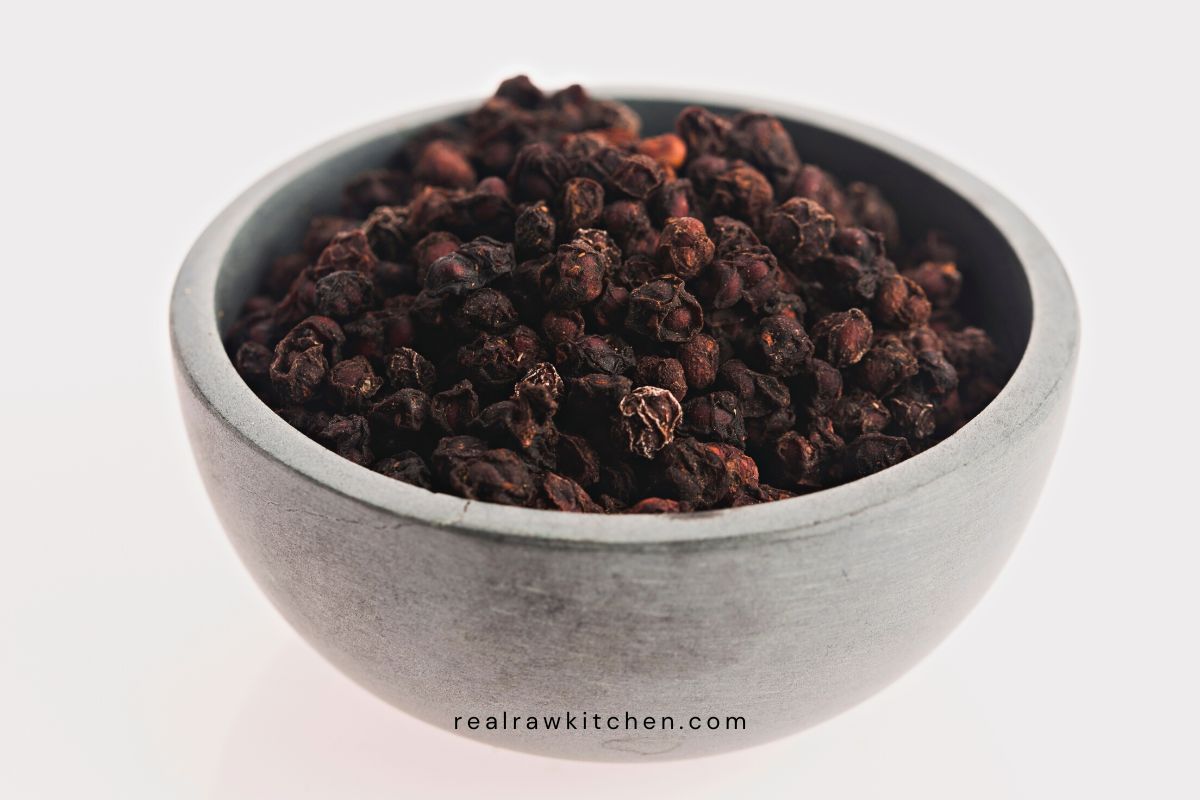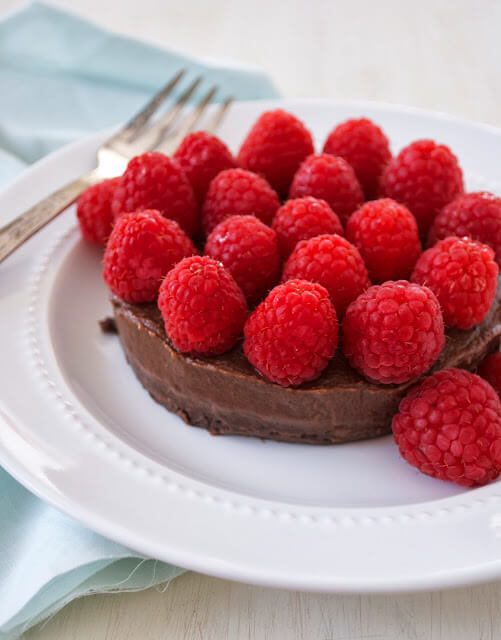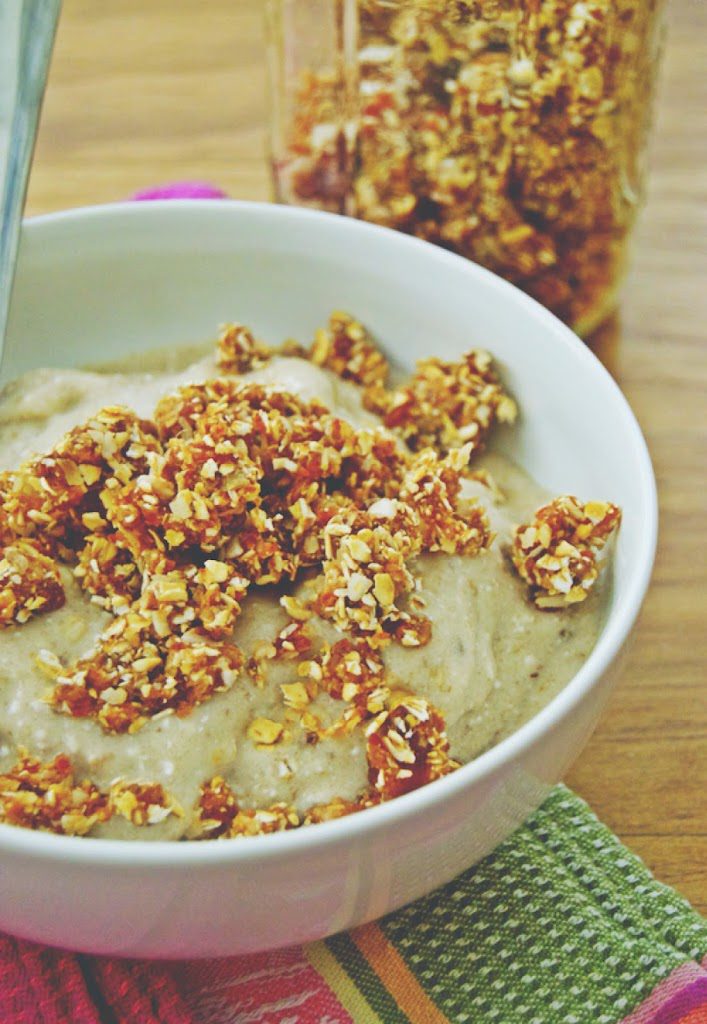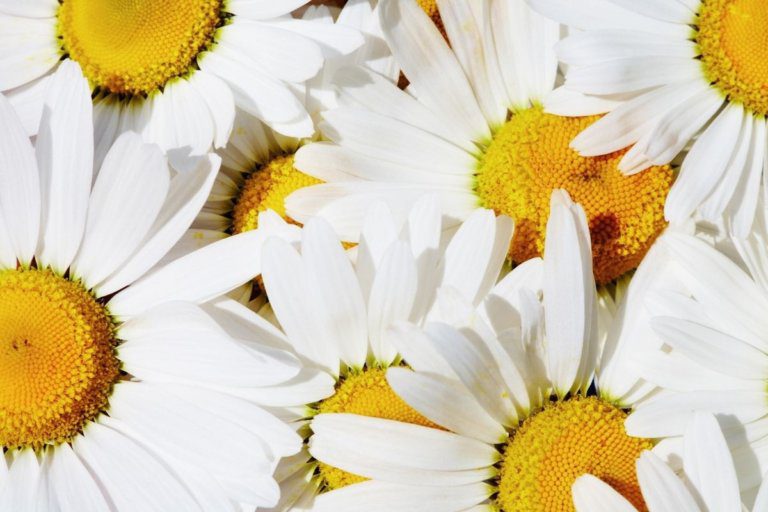I am so excited to write about Schisandra berries here on the blog. I first discovered Schisandra berries a couple of years ago through a naturopath in Australia. I made a syrup that I took by the spoonful each day and watched as my body settled into a rhythm.
Cherished by Chinese royalty for its beauty and anti-aging qualities, Schisandra Chinensis is a vine found in China, Japan, Korea, and Russia. Its berries have a unique taste, which has been described as a mix of five different flavors: sweet, salty, bitter, pungent, and sour. It should be no surprise then that its fruit is also called five flavor fruit.
Ancient Chinese believed the plant worked on all 12 “meridians”, channels through which energy flows throughout the body. Therefore, it can restore the whole body’s internal balance and health.
Today, many of the traditional uses have been validated by scientific research, which confirms the positive beneficial effects that Schisandra has on nearly every organ of the human body.
Let’s look at the multifaceted health benefits of this plant together.
Schisandra benefits
In Traditional Chinese Medicine (TCM), Schisandra has been used for thousands of years to promote a balance between yin and yang. This balancing effect is to be traced in its bioactive components, Schisandra lignans, which have a positive effect on the brain, kidneys, liver, and lungs, thus providing balance in the whole body.
In Russia, Schisandra has been used during the past centuries by the Nanai hunters, as a tonic to reduce thirst, hunger, and exhaustion, and to improve night vision. Thanks to these properties, these berries came to be of considerable value for Soviet soldiers during WWII, which subsequently led to much research being published in their WWII military journals.
Russian research has been focusing since the 1950s on the positive effects that Schisandra has on the nervous system and on its potential uses as an adaptogen. Adaptogens are substances that help the body adapt to stressful conditions, and the efficiency of Schisandra for this has led to it being integrated into conventional medical and pharmacy practice in Russia.
Current research has been focusing on Schisandra’s application in treating diabetes and liver-related diseases like chronic hepatitis.
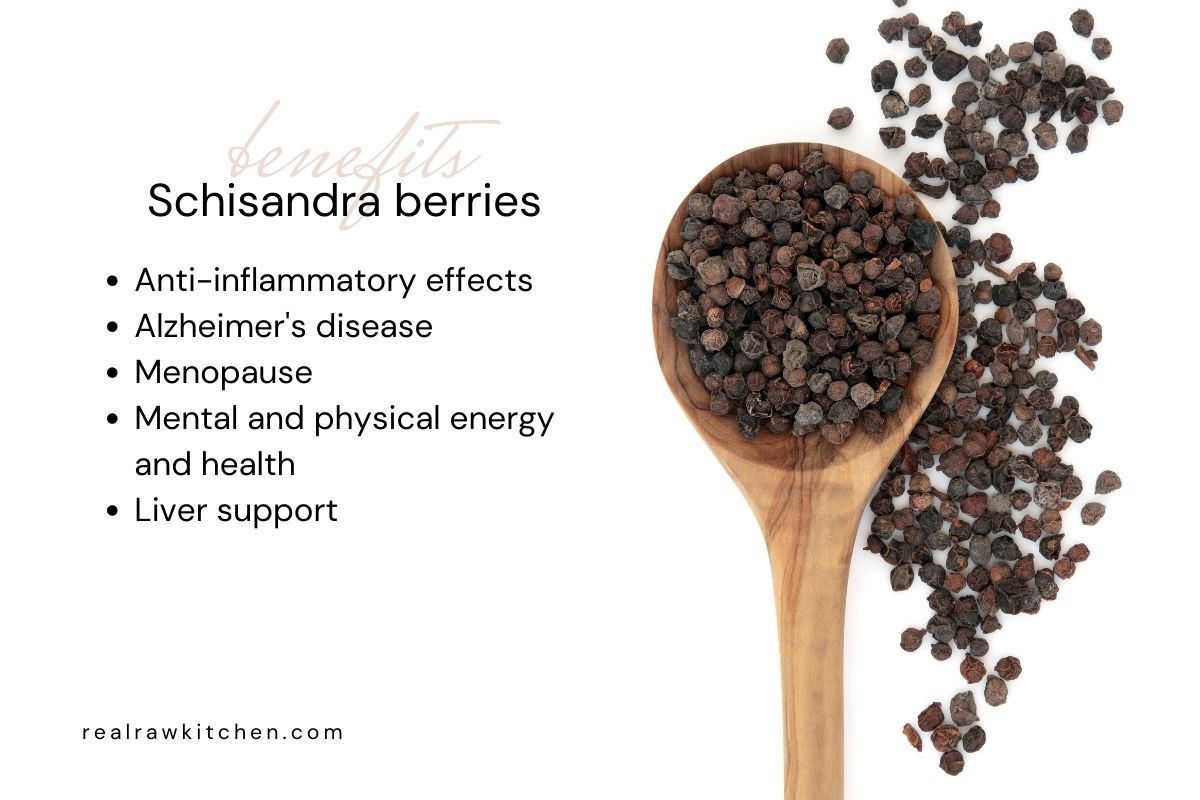

The most important benefits of this plant, which have also been corroborated by extensive research, relate to:
Anti-inflammatory effects
In vitro studies suggest that Schisandra is a strong anti-inflammatory and may have anticancer effects, thanks to the down regulating effect played on inflammatory cytokines. This has a big role in fighting free radicals, which are known to be at the root of modern diseases like cancer, diabetes, and heart diseases.
Other consequences of Schisandra’s anti-inflammatory properties are that it can contrast the hardening of the arteries observed in arteriosclerosis and, by bringing the body to an optimal acid-base balance, it may help prevent diabetes.
The antioxidant activity might also have a positive effect on skin health, and that’s why Chinese magnolia vine has found a long history of use, especially by Asian women, in treating or healing dermatitis and other skin disorders, and in helping skin retain its elasticity. However, more human studies need to be performed to verify these properties.
Schisandra also improves the body’s ability to repair tissues, since it helps control the release of white blood cells, a group of cells involved in the body’s defense mechanisms and reparative activity.
Alzheimer’s disease
The anti-inflammatory properties play a big role in preventing and ameliorating diseases caused by neuroinflammation which include, among others, Alzheimer’s and Parkinson’s diseases. According to a study conducted in 2017, Schisandrin B, an active substance derived from Wu Wei Zi (the Chinese name for Schisandra) has significant beneficial effects in ameliorating Alzheimer’s disease. This is possible thanks to the blocking effect that Schisandrin B exerts on the formation of components that are at the base of amyloid plaque formation, a substance found in the brains of people affected by this disease.
Menopause
According to a placebo-controlled trial conducted between 2014 and 2015, Schisandra Chinensis can be a safe and effective complementary medicine to cure and prevent menopausal symptoms, such as hot flashes, sweating, and heart palpitations.
During this study, a group of women aged 40-70 received a treatment of Schisandra extract for 6 weeks. At the end of the study, women who had been administered Schisandra extract showed significantly lower menopausal symptoms compared to the placebo group.
Mental and physical energy and health
The positive effects that these five-flavor berries have on blood circulation make it so that their consumption also helps increase endurance and accuracy of movement, together with mental performance and working capacity.
Recent human studies suggest that Schisandra Chinensis may also increase muscle strength. In one study, two groups of older adults have been tasked to perform low-impact exercise three days a week for 12 weeks. One group has been administered Schisandra extract every day, while the control group was solely performing a low-impact exercise. At the end of the experiment, the treatment group observed enhanced skeletal muscle strength compared to the control group. However, no increases in muscle mass could be observed.
In addition, animal studies have found that Schisandra might reduce anxiety symptoms, but further studies need to be performed in order to assert these properties in humans.
Liver support
Schisandra fruits contain at least 30 different lignans, estrogen-like activity compounds which are known to have a hepatoprotective effect. This means that they can help treat, cure or prevent liver diseases. But there’s more to it: Because liver health is tied to stronger immunity, this five-flavor berry also protects against infections, indigestion, and various stomach disorders. The hepatoprotective effects of Schisandra have been backed up by several human studies, which also took into consideration liver transplant patients.
In these patients, Wu Wei Zi consumption led to a bigger concentration of Tacrolimus (Tac), a substance that prevents allograft rejection after liver transplantation. Another study conducted by the Taichung Hospital Department of Health in China showed that patients experienced improvements in liver function and relief from fatty liver disease when using a mixture of Schisandra fruit extract and sesamin.
Potential risks and side effects
Although the Schisandra plant has been used for generations safely and effectively, it’s important not to exceed the recommended dosages provided by TCM or available on product labels.
Because Schisandra lignans impact the way the liver processes drugs, possible interactions with other medications or supplements could arise, so always be sure to consult your healthcare provider if you currently take prescriptions. This is also true in case you are suffering from an existing health condition or disease. The side effects, although uncommon, could result in troublesome conditions like stomach disorders, anorexia, and urticaria.
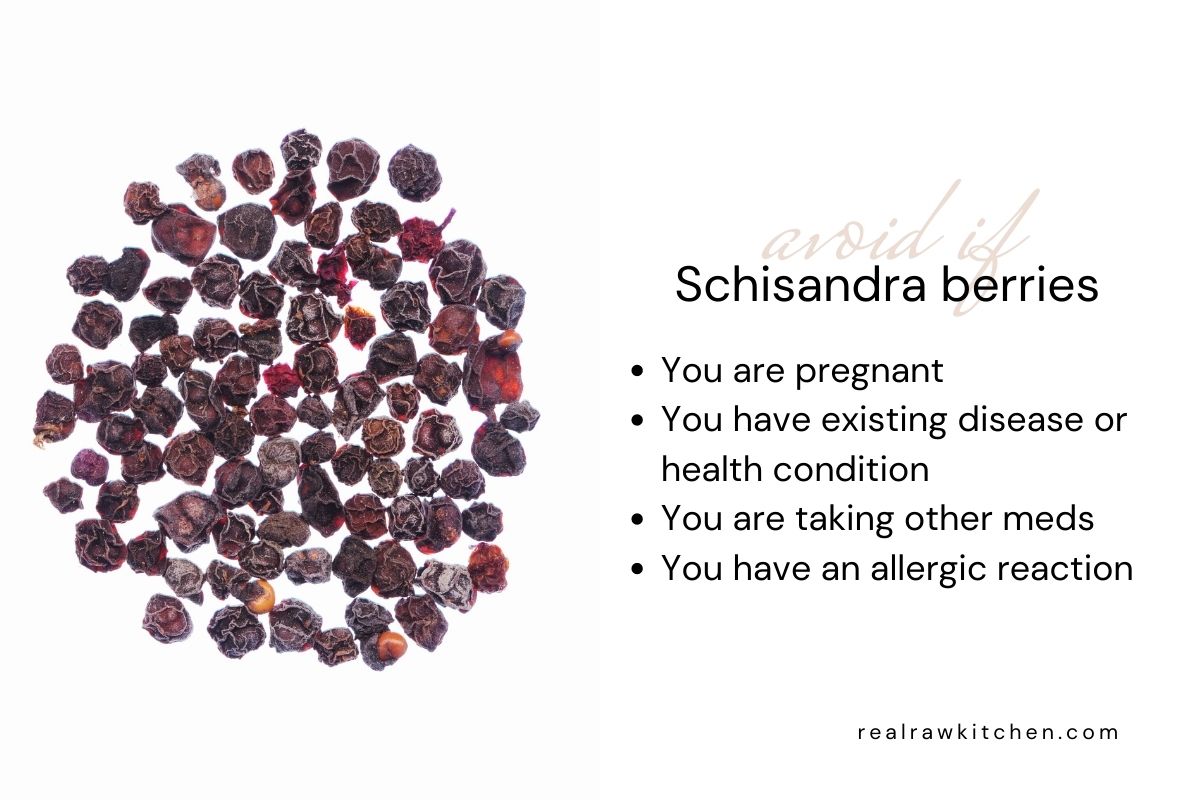

Schisandra consumption should be avoided in cases of:
Pregnancy
The same pharmacological properties that make Schisandra dietary supplements useful for inducing or promoting prolonged labor could, on the other hand, represent a risk for healthy pregnant women. In fact, Schisandra lignans might increase uterine contractility, leading to potential miscarriage.
Existing disease or health condition
According to research published in “Botanical Medicine for Women’s Health” (chapter 6), consumption is contraindicated for patients with high gastric acidity or peptic ulcers, as their symptoms could be worsened. Patients with epilepsy, hypertension and intracranial pressure should also stay away from it, as they could experience side effects like restlessness, insomnia, and dyspnea. In Traditional Chinese Medicine, it’s clearly stated that Schisandra should not be used in cases of excess heat, or in the early stages of a rash or cough.
Patients who are taking other meds
Drug interactions have been observed with warfarin or other medications which are broken down by the liver. Schisandra can reduce the effectiveness of some medications or can increase their side effects. However, there doesn’t appear to be any adverse interactions between Schisandra and other herbs and supplements.
Allergic reactions
Strong allergic reactions are quite rare, but in sensitive subjects, they could lead to skin rashes, itching and swelling, especially on the face, tongue, or throat, dizziness, and trouble breathing. Abstain from its use if you should notice any of these symptoms.
Forms and doses
Schisandra is classified as a superior medicine in the classic herbal compendium “Materia Medica” by S. N. Ben Cao Jing, as it can prolong longevity, increase qi energy and treat fatigue and emaciation, by also acting as a sexual tonic. Due to these all-encompassing benefits, many ways of consuming this plant have developed throughout history.
In northern China and eastern Russia, Schisandra berries are typically manufactured as juices, wines, extracts, and sweets.
The berries can be macerated in fruit juice, tinctured, and infused as Schisandra herbal tea. On the market, Schisandra is available as a powder or as capsules and pills. The typical dosage for Schisandra extract is 100 mg twice daily. However, since research in the West regarding dosages is lacking, current estimates are based on traditional dosages observed in TCM or directly available on product labels. We have grouped these dosages for quick reference, as follows:
- Dried fruit extract in a 1:6 w/v ratio against liquid (95% ethanol) and administered at 20-30 drops daily
- Dried fruit extract in a 1:20 w/v ratio against water, 150mL drank twice a day with meals
- 1 capsule of Schisandra extract per day. Take before or during a meal and with plenty of water to improve liver function and to feel more energized.
Try these other healing herbs for women’s wellness:
- Motherwort uses
- Herbs for PCOS
- Plantain leaf benefits
- Herbs for balancing female hormones
- Herbs for sitz bath
- Burdock root benefits
- Mullein root benefits
Recipes
There are many cruelty-free recipes that feature Schisandra as their key ingredient. We will share our favorite vegan recipes here with you:
Schisandra berries tea
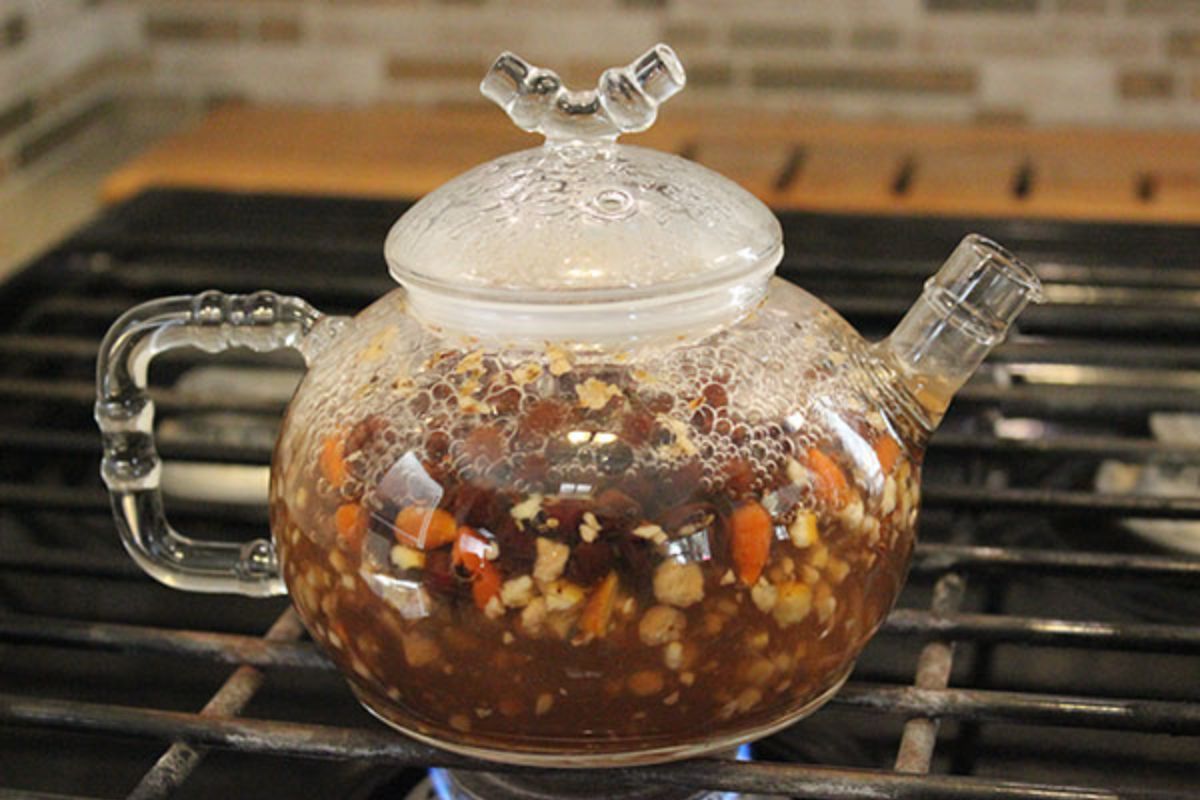

For this recipe, you will need a pot and a tea infuser ball or a large tea filter. If you don’t have a tea infuser or filter, you can put the dried berries directly into the teapot, but you’ll need to strain them out before pouring the tea into your cup.
- Start by soaking the berries or ground powder (less preferred) in water for several hours or overnight.
- Proceed to boil the water.
- Then, measure 1 to 2 tablespoons (7 to 14 g) of dried Schisandra berries into the infuser or filter.
- Add the Schisandra berries to the water and simmer the tea for 15 to 20 minutes.
Drink Schisandra berry tea 3 or 4 times a day for better focus or to improve liver health.
Schisandra berries hot cocoa
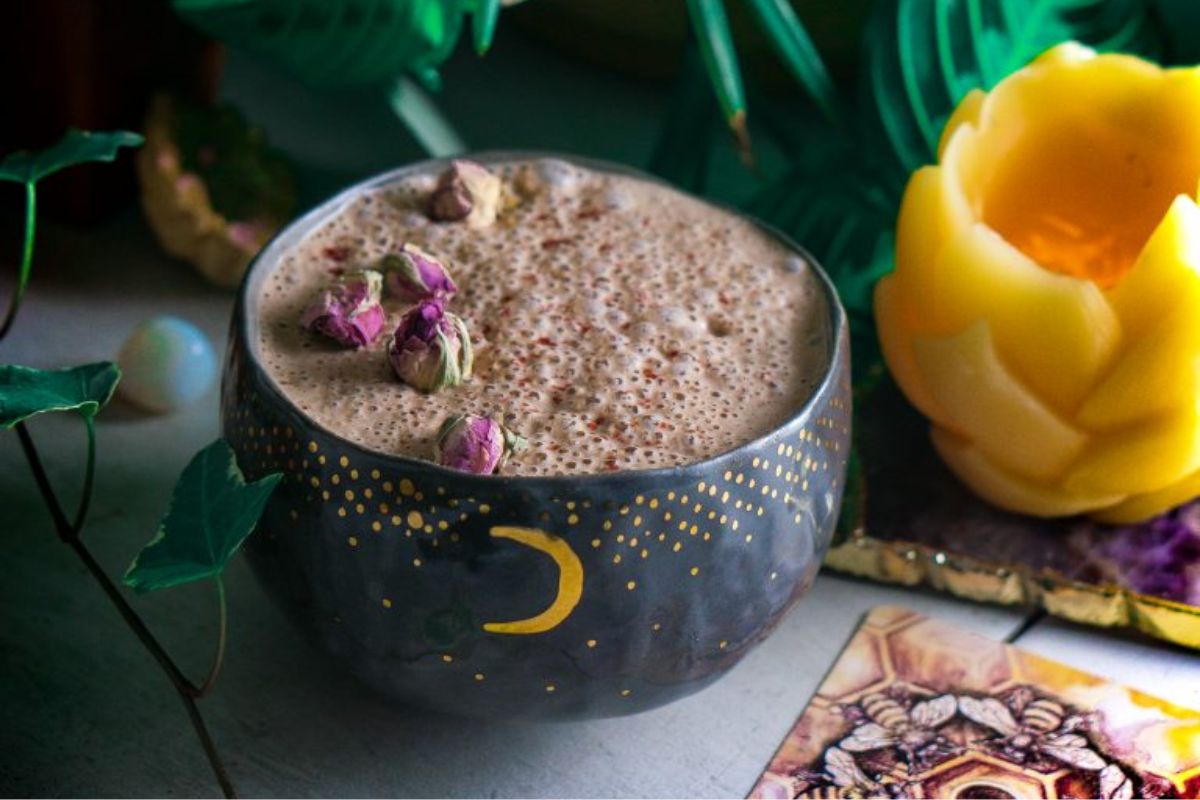

Indulge in a sweet moment of relaxation with this delicious vegan hot chocolate that will not only delight your senses but also help you fight stress and anxiety.
For this recipe, you will need:
- 1 cup of coconut milk
- 6 cacao wafers
- 1-2 tbsp of coconut butter
- ¼ tsp Schisandra berry powder
- ¼ tsp of stevia
- pinch of cinnamon
- dried rose buds and rose petals to sprinkle on top
Start by heating the coconut milk on the stove. Then pour it into a high-speed blender with the rest of the ingredients until the cocoa is smooth and creamy. Add water if the cocoa should come out too thick… Enjoy!
Sparkling Strawberry Punch with Schisandra Berries
For this recipe you need:
- ½ cup dried Schisandra berries
- 2 cups water
- 200 g / 7 ounces strawberries, stems removed
- 3 tbsp raw honey or maple syrup
- 1 cup carbonated water, chilled
- mint leaves (optional), to garnish
- homemade sugar syrup (or just water and sugar)
First, start by steeping the dried fruits in the water overnight. The next day, strain the berries and keep their water. Then, mince the strawberries with a masher or fork, and combine the mashed strawberries with the vegan honey.
In a jug, mix the strained water, strawberry, and honey mixture together with the carbonated water.
Add some sugar syrup according to your liking. To make the sugar syrup, you just need to add sugar to a saucepan and boil over low heat until the sugar dissolves. Let the syrup cool down and then add it to the punch. Stir well and serve in a chilled glass. Optionally, you can add some mint leaves for decoration.
Learn more about herbal medicine
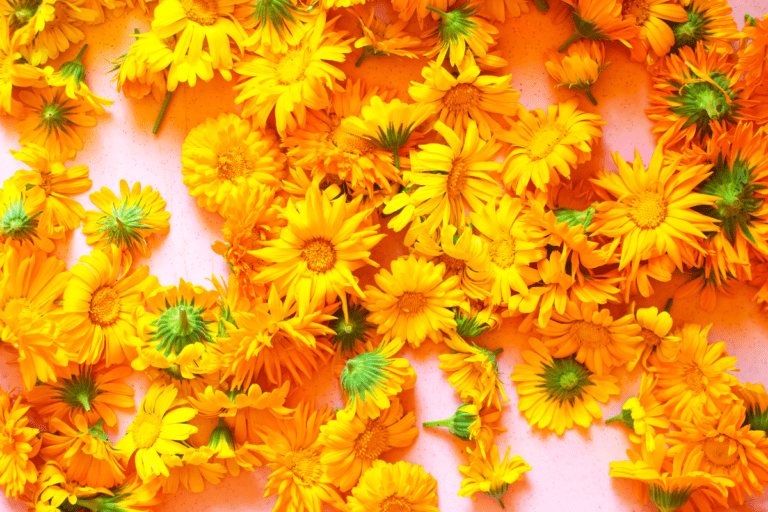

Calendula Benefits For Skin For Eczema, Dryness, & Wound Healing
Here are the powerful calendula benefits for skin and why I use it in all of my skincare products
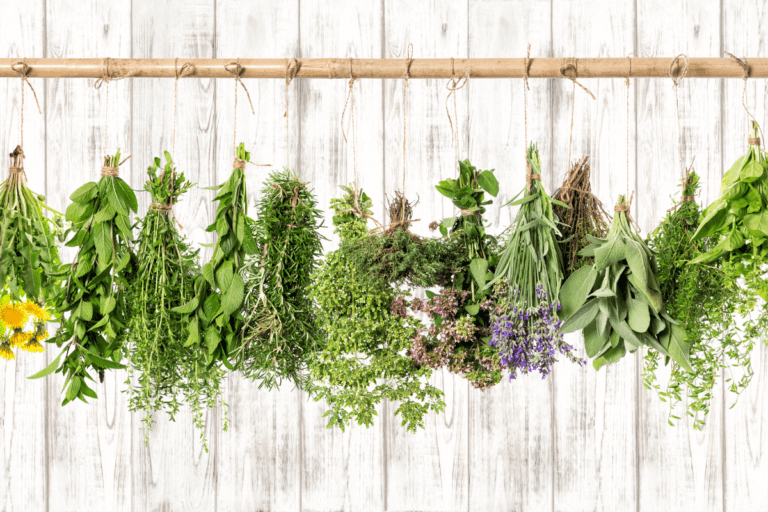

7 Herbs For PCOS (& Other Natural Remedies)
Research shows that these herbs for PCOS can help treat symptoms. Here’s which ones to try.
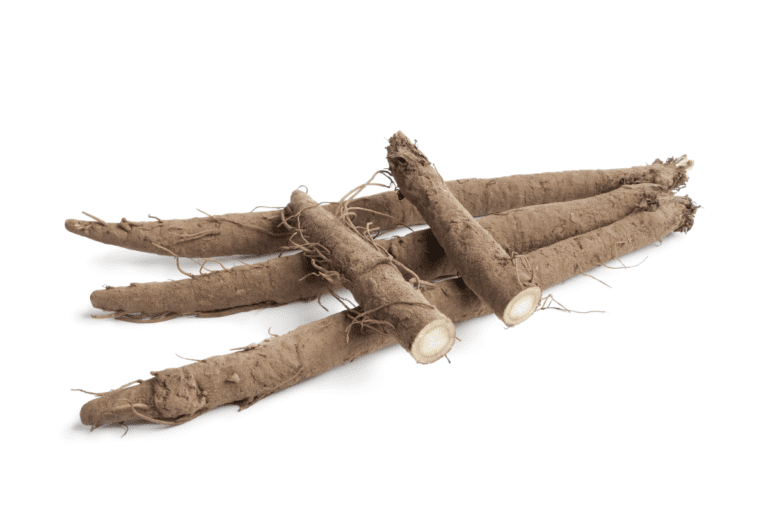

Burdock Root Benefits & Healing Recipes
These burdock root benefits will make you want to put this healing plant in your pantry!
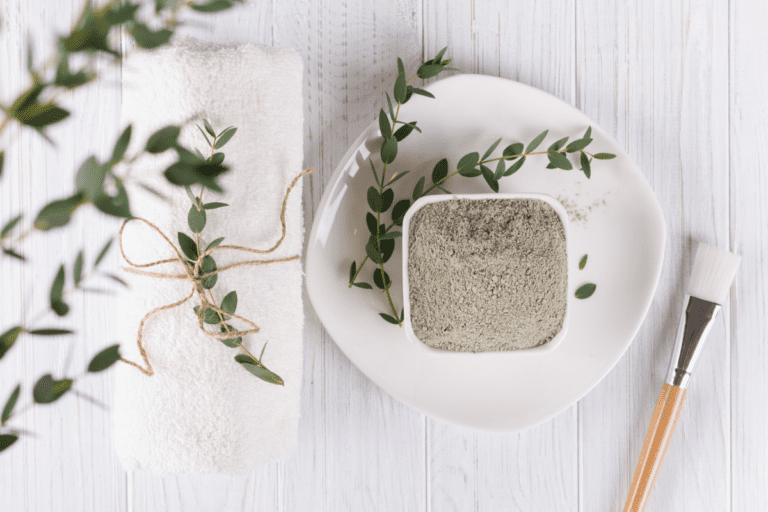

Incredible French Green Clay Benefits For Glowing Skin
Here are all of the incredible french green clay benefits for gorgeous, calm, healthy skin.


11 essential oils for PCOS relief and support
PCOS can be challenging for our beautiful bodies. Here are 11 essential oils for PCOS that can help make it a little easier.


How to use essential oils in the shower to heal everything
Here’s how I use essential oils in the shower, plus a few recipes!
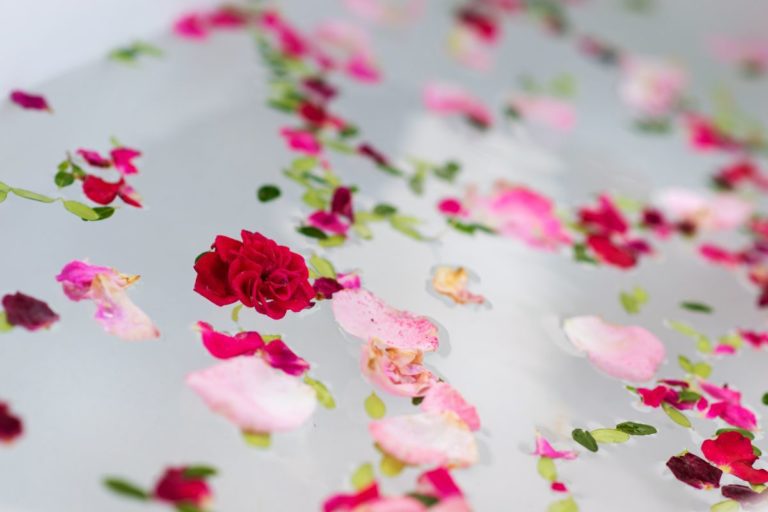

How to make a perfect herbal sitz bath
Here are the perfect herbs for a healing sitz bath.
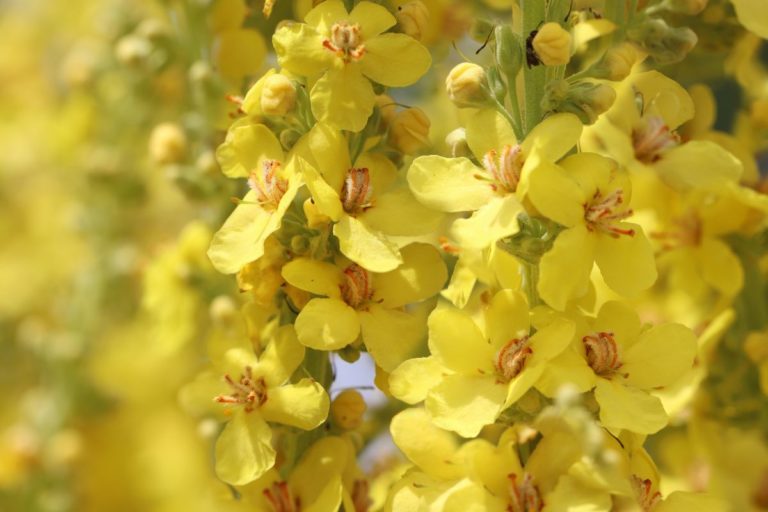

Exploring Mullein Plant Medicinal Uses (And Recipes)
Discover the medicinal benefits of the mullein plant for respiratory issues, skin conditions and ear pain. Plus a few recipes for your own home remedies.
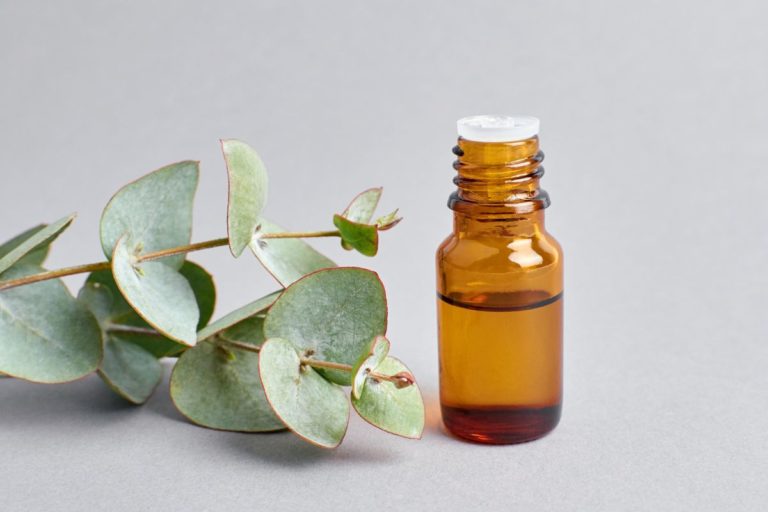

6 best essential oils for the lymphatic system
Essential oils can be used to stimulate the lymphatic system, reduce inflammation, and improve immune system functioning. Learn how to use essential oils for lymph nodes and which oils are most effective.
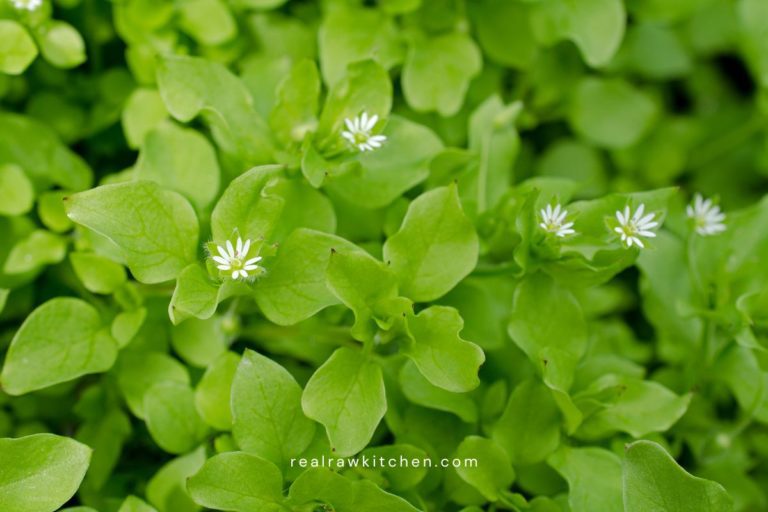

Chickweed health benefits for your home
Learn more about the chickweed health benefits and why you’ll want it in your own home medicine cabinet.
